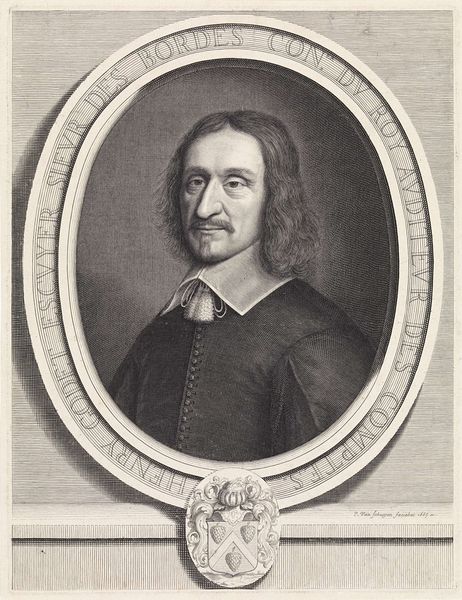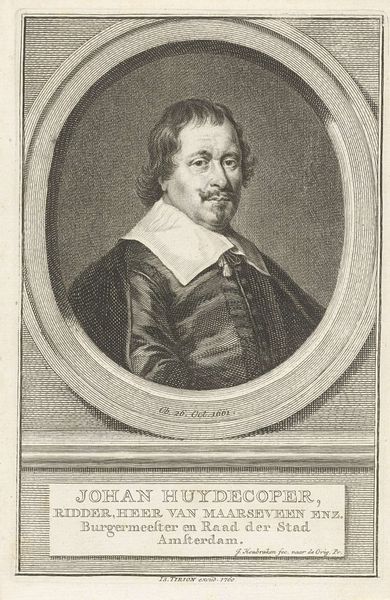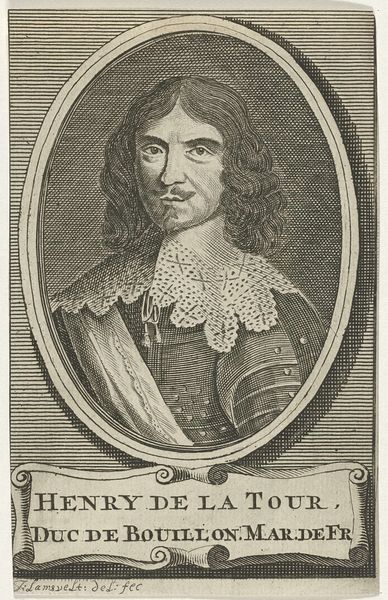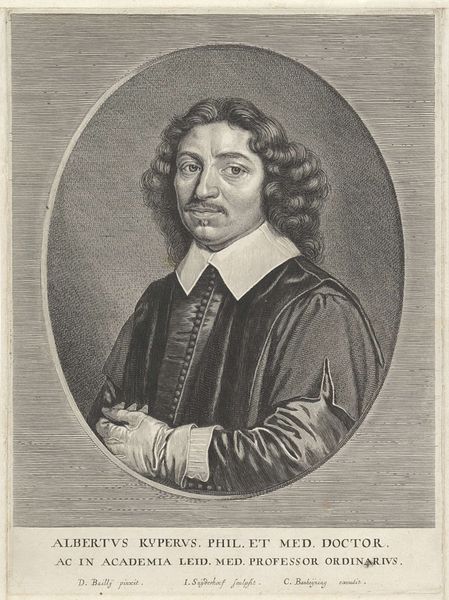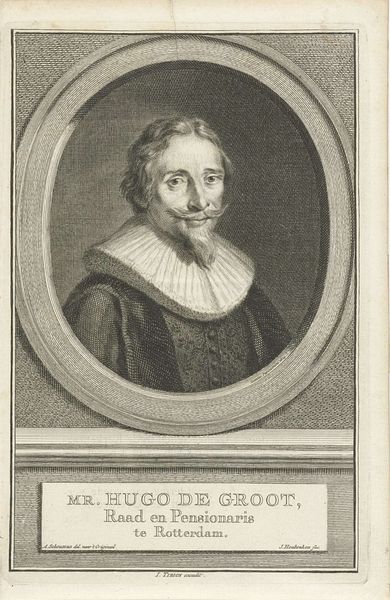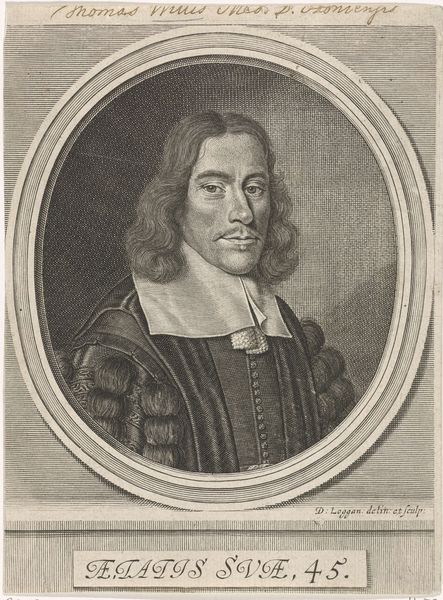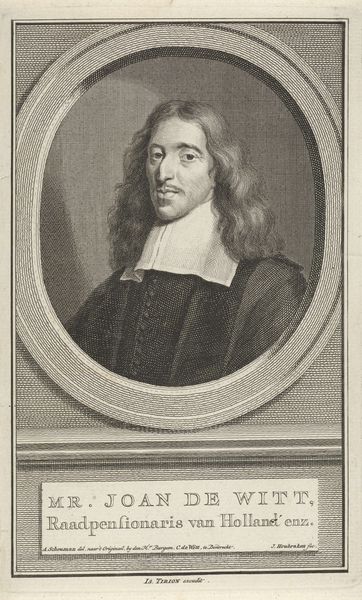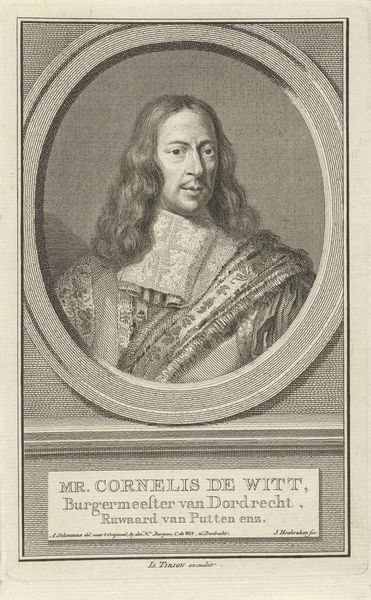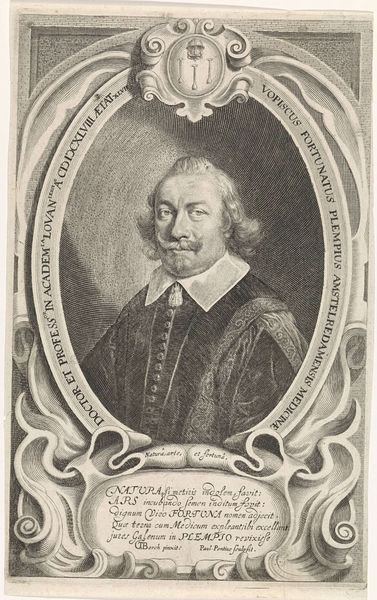
print, engraving
#
portrait
#
baroque
#
dutch-golden-age
# print
#
old engraving style
#
historical photography
#
history-painting
#
engraving
Dimensions: height 179 mm, width 112 mm
Copyright: Rijks Museum: Open Domain
This is Jacob Houbraken’s portrait of Jacob de Witt, made in 1760. Houbraken was a prominent engraver during the Dutch Golden Age, a period characterized by unprecedented economic growth and cultural flourishing. His engravings often captured the likenesses of notable figures. De Witt was the Burgermeester of Dordrecht, a city with significant political and economic influence during this time. The portrait itself reflects the conventions of the era, with its formal composition, attention to detail, and emphasis on the sitter's status. The use of lace, the cut of his hair, and the oval frame of the portrait all speak to the visual language of power and respectability. Consider how portraits like this played a role in shaping perceptions of leadership. By carefully constructing a visual image of authority, Houbraken's work invites us to reflect on the relationship between identity, representation, and social power in the Dutch Golden Age.
Comments
No comments
Be the first to comment and join the conversation on the ultimate creative platform.
